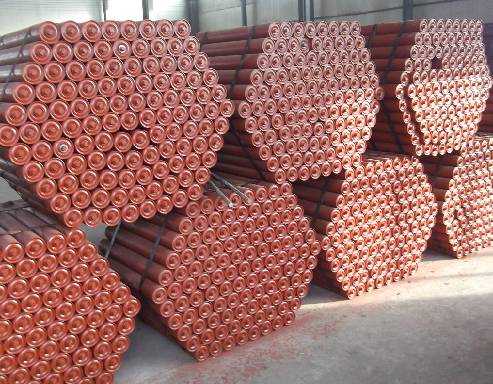 Afrikaans
Afrikaans  Albanian
Albanian  Amharic
Amharic  Arabic
Arabic  Armenian
Armenian  Azerbaijani
Azerbaijani  Basque
Basque  Belarusian
Belarusian  Bengali
Bengali  Bosnian
Bosnian  Bulgarian
Bulgarian  Catalan
Catalan  Cebuano
Cebuano  Corsican
Corsican  Croatian
Croatian  Czech
Czech  Danish
Danish  Dutch
Dutch  English
English  Esperanto
Esperanto  Estonian
Estonian  Finnish
Finnish  French
French  Frisian
Frisian  Galician
Galician  Georgian
Georgian  German
German  Greek
Greek  Gujarati
Gujarati  Haitian Creole
Haitian Creole  hausa
hausa  hawaiian
hawaiian  Hebrew
Hebrew  Hindi
Hindi  Miao
Miao  Hungarian
Hungarian  Icelandic
Icelandic  igbo
igbo  Indonesian
Indonesian  irish
irish  Italian
Italian  Japanese
Japanese  Javanese
Javanese  Kannada
Kannada  kazakh
kazakh  Khmer
Khmer  Rwandese
Rwandese  Korean
Korean  Kurdish
Kurdish  Kyrgyz
Kyrgyz  Lao
Lao  Latin
Latin  Latvian
Latvian  Lithuanian
Lithuanian  Luxembourgish
Luxembourgish  Macedonian
Macedonian  Malgashi
Malgashi  Malay
Malay  Malayalam
Malayalam  Maltese
Maltese  Maori
Maori  Marathi
Marathi  Mongolian
Mongolian  Myanmar
Myanmar  Nepali
Nepali  Norwegian
Norwegian  Norwegian
Norwegian  Occitan
Occitan  Pashto
Pashto  Persian
Persian  Polish
Polish  Portuguese
Portuguese  Punjabi
Punjabi  Romanian
Romanian  Russian
Russian  Samoan
Samoan  Scottish Gaelic
Scottish Gaelic  Serbian
Serbian  Sesotho
Sesotho  Shona
Shona  Sindhi
Sindhi  Sinhala
Sinhala  Slovak
Slovak  Slovenian
Slovenian  Somali
Somali  Spanish
Spanish  Sundanese
Sundanese  Swahili
Swahili  Swedish
Swedish  Tagalog
Tagalog  Tajik
Tajik  Tamil
Tamil  Tatar
Tatar  Telugu
Telugu  Thai
Thai  Turkish
Turkish  Turkmen
Turkmen  Ukrainian
Ukrainian  Urdu
Urdu  Uighur
Uighur  Uzbek
Uzbek  Vietnamese
Vietnamese  Welsh
Welsh  Bantu
Bantu  Yiddish
Yiddish  Yoruba
Yoruba  Zulu
Zulu ceramic pulley lagging
The Advantages of Ceramic Pulley Lagging
In various industrial applications, conveying systems play a crucial role in transporting materials efficiently. One key aspect that enhances the performance of these systems is the use of pulley lagging. Among the different types of lagging available, ceramic pulley lagging has gained significant attention due to its distinct advantages.
Ceramic pulley lagging is designed using high-friction ceramic tiles or coatings bonded to a rubber backing. This innovative design offers exceptional grip and durability, making it suitable for heavy-duty applications found in mining, material handling, and various manufacturing processes. The ceramic coating enhances traction between the pulley and the conveyor belt, minimizing slippage and ensuring a smooth operational flow.
One of the primary benefits of ceramic pulley lagging is its impressive wear resistance. In environments where abrasive materials are being handled, such as in mining operations, traditional rubber lagging may wear out quickly. In contrast, the hard ceramic surface withstands harsh conditions, resulting in a longer lifespan for both the lagging and the conveyor system itself. This durability translates to reduced maintenance costs and less frequent replacements, leading to significant savings for businesses.
Another advantage is the ability of ceramic lagging to operate effectively in high-temperature applications. Many industries face high thermal conditions that can compromise the performance of standard lagging materials. Ceramic lagging remains stable and reliable even under elevated temperatures, ensuring that operations can continue smoothly without interruptions.
ceramic pulley lagging

Furthermore, the enhanced frictional properties of ceramic lagging contribute to increased energy efficiency. By preventing slippage, the system requires less power to operate, leading to lower energy consumption. This not only is beneficial for the environment but also reduces operational costs, making it a win-win situation for companies striving for sustainability.
Furthermore, the installation of ceramic lagging is typically straightforward, allowing for quick upgrades to existing pulley systems. The time saved during installation translates to minimal downtime in production, an essential factor for industries where time is money.
In addition to these practical advantages, ceramic pulley lagging is customizable to meet specific operational needs. Businesses have the flexibility to choose the thickness, tile size, and rubber backing to tailor the lagging system that suits their unique requirements. This adaptability makes ceramic lagging a versatile solution for various industrial applications.
In conclusion, ceramic pulley lagging provides a robust and efficient solution for enhancing the performance of conveyor systems. Its superior wear resistance, high-temperature stability, energy efficiency, and ease of installation make it an ideal choice for industries dealing with heavy-duty applications. As companies continue to seek ways to improve productivity and reduce costs, the use of ceramic pulley lagging is likely to become increasingly prominent in the future. By investing in this advanced technology, businesses can ensure their operations run efficiently and effectively.
-
Revolutionizing Conveyor Reliability with Advanced Rubber Lagging PulleysNewsJul.22,2025
-
Powering Precision and Durability with Expert Manufacturers of Conveyor ComponentsNewsJul.22,2025
-
Optimizing Conveyor Systems with Advanced Conveyor AccessoriesNewsJul.22,2025
-
Maximize Conveyor Efficiency with Quality Conveyor Idler PulleysNewsJul.22,2025
-
Future-Proof Your Conveyor System with High-Performance Polyurethane RollerNewsJul.22,2025
-
Driving Efficiency Forward with Quality Idlers and RollersNewsJul.22,2025





























